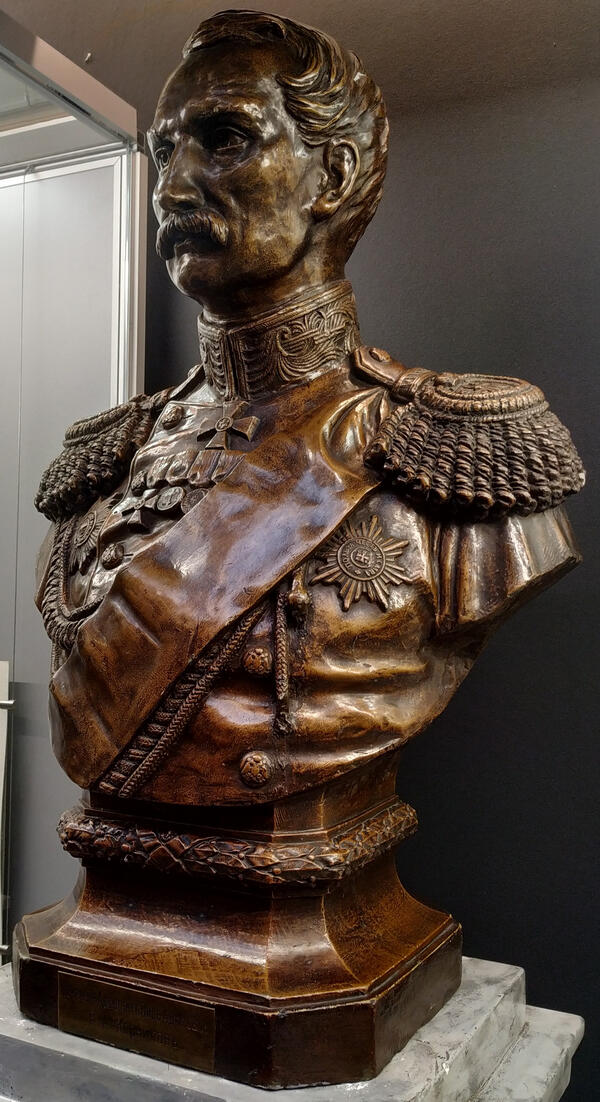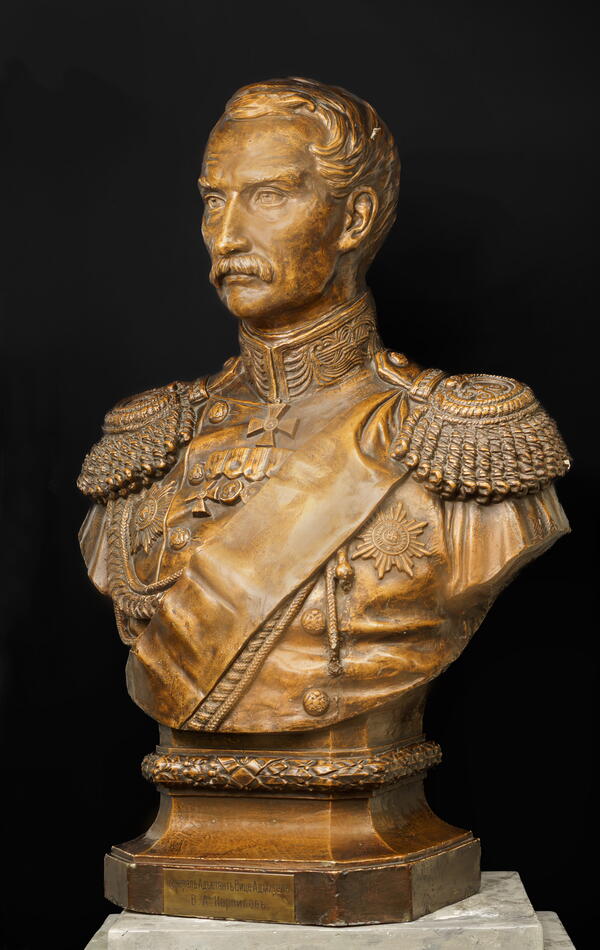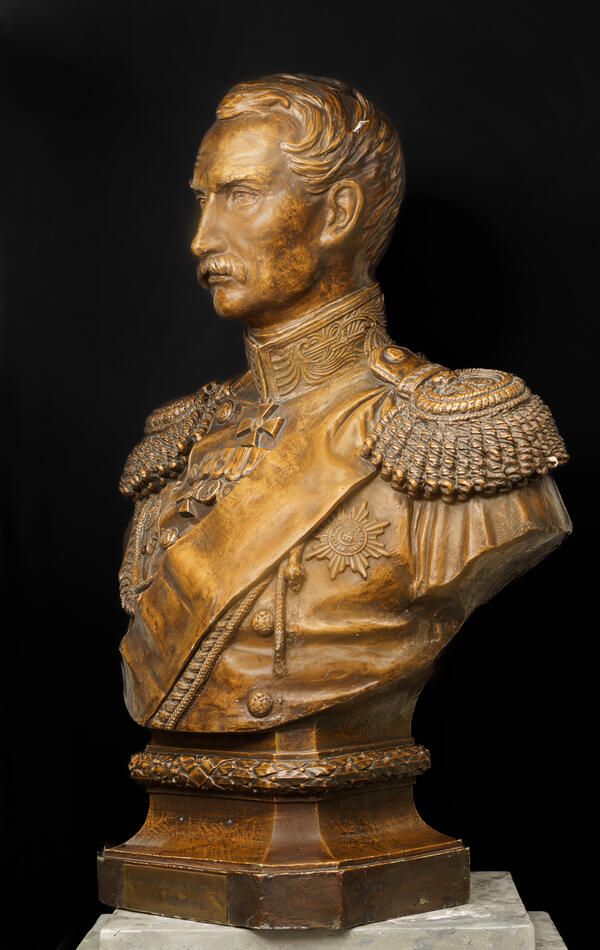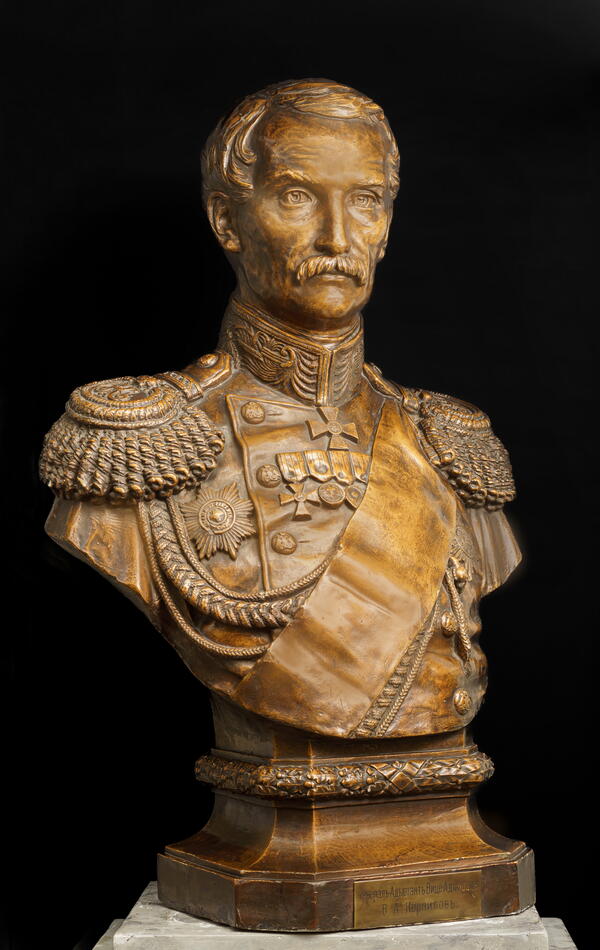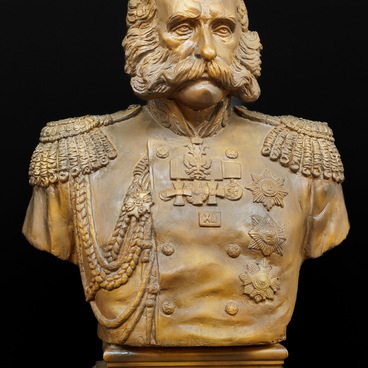Vice Admiral Vladimir Alekseyevich Kornilov (1806–1854), a hero of the Crimean War, was born in the family estate of a retired officer of the navy. In 1823, he graduated from the Naval Cadet Corps in Saint Petersburg and began his military career on the ships of the Baltic Fleet. Kornilov first saw military action during the Battle of Navarino (1827). The midshipman Kornilov commanded three guns of the lower deck. For his service in battle, Kornilov was awarded the Order of Saint Anna, 4th class, as well as English, French, and Greek orders.
For his ardor and distinguished service during the war of 1828–1829, Kornilov was promoted to the rank of lieutenant. In January 1833, Kornilov was transferred to the “Memory of Evstafi” ship of the Black Sea Fleet as a special duty officer. He participated in the Bosporus Expedition of the Russian Navy. For his achievements, Kornilov was awarded the Order of Saint Vladimir, 4th class, and the Turkish gold badge of merit. Over the years, Kornilov served as the commander of the “Themistocles” brig, the “Orest” corvette, the “Flora” frigate, and the “Twelve Apostles” ship of the line.
Kornilov and the commander of the squadron headquarters Lazarev initiated the first use of shell guns on Russian ships. Kornilov’s shipboard routine was recognized as exemplary and introduced on all ships of the Black Sea Fleet. In 1838, Kornilov developed and successfully implemented a plan of landing on the Caucasus coast. In 1846, he was sent to England to monitor the construction of the “Vladimir” steam frigate, study new designs and steam mechanisms, and explore the construction of completely ironclad ships at British dockyards.
After the death of Admiral Lazarev, Vladimir Kornilov essentially became the commander of the Black Sea Fleet. When the Crimean (Eastern) War of 1853–1856 broke out, Kornilov commanded a detachment of steamships. He organized the defense of Sevastopol where his talent as a military commander was shown at its best. As the commander of a garrison with 7,000 people, he set an example of a skillful organization of aggressive defense and became rightly considered the founder of innovative warfare methods.
Vice Admiral Vladimir Kornilov was killed on the Malakhov Kurgan on October 5, 1854, during the first bombarding of the city by English and French forces. He was buried in Saint Vladimir’s Cathedral in Sevastopol, in one vault with Admiral Mikhail Lazarev. Later, Pavel Nakhimov and Vladimir Istomin were also buried there.
For his ardor and distinguished service during the war of 1828–1829, Kornilov was promoted to the rank of lieutenant. In January 1833, Kornilov was transferred to the “Memory of Evstafi” ship of the Black Sea Fleet as a special duty officer. He participated in the Bosporus Expedition of the Russian Navy. For his achievements, Kornilov was awarded the Order of Saint Vladimir, 4th class, and the Turkish gold badge of merit. Over the years, Kornilov served as the commander of the “Themistocles” brig, the “Orest” corvette, the “Flora” frigate, and the “Twelve Apostles” ship of the line.
Kornilov and the commander of the squadron headquarters Lazarev initiated the first use of shell guns on Russian ships. Kornilov’s shipboard routine was recognized as exemplary and introduced on all ships of the Black Sea Fleet. In 1838, Kornilov developed and successfully implemented a plan of landing on the Caucasus coast. In 1846, he was sent to England to monitor the construction of the “Vladimir” steam frigate, study new designs and steam mechanisms, and explore the construction of completely ironclad ships at British dockyards.
After the death of Admiral Lazarev, Vladimir Kornilov essentially became the commander of the Black Sea Fleet. When the Crimean (Eastern) War of 1853–1856 broke out, Kornilov commanded a detachment of steamships. He organized the defense of Sevastopol where his talent as a military commander was shown at its best. As the commander of a garrison with 7,000 people, he set an example of a skillful organization of aggressive defense and became rightly considered the founder of innovative warfare methods.
Vice Admiral Vladimir Kornilov was killed on the Malakhov Kurgan on October 5, 1854, during the first bombarding of the city by English and French forces. He was buried in Saint Vladimir’s Cathedral in Sevastopol, in one vault with Admiral Mikhail Lazarev. Later, Pavel Nakhimov and Vladimir Istomin were also buried there.

